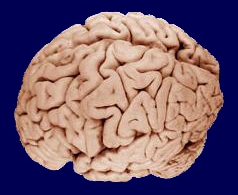Scientists in Cambridge have pinpointed changes in brain activity underlying obsessive compulsive disorder. The discovery could lead to more accurate and earlier diagnosis of the disabling condition, which affects between 1-3% of the population, runs in families, and is associated with frequent intrusive thoughts (obsessions), which provoke sufferers to perform recurrent rituals (compulsions) such as hand washing or turning lights on and off. These symptoms can be very distressing and can take up hours of a patient's time. They're often also diagnosed late, which might also make them harder to treat when the sufferer eventually seeks help. 
But that could be about to change; writing in this week's Science, Sam Chamberlain and his colleagues recruited 14 people suffering from OCD, 12 of their immediate relatives, and a control group of 14 unaffected individuals. In a brain scanner the volunteers were shown two pictures side by side of a house and a face. They were then asked to press one of two buttons to indicate which of the two images was the "correct" answer, which they had to work out initially by trial and error. After the correct "target" had been identified six times in a row it changed, so that the subject had to learn again.
The researchers then compared the patterns of brain activity between the subjects and found that amongst the OCD sufferers and their relatives a brain region called the lateral orbitofrontal cortex was consistently less active. This region is concerned with reacting to change, which explains the ritualistic behaviour shown by OCD sufferers.
"Impaired function in brain areas controlling flexible behaviour predisposes people to developing the compulsive rigid symptoms that are characteristic of OCD," says Chamberlain. "This study shows that these brain changes run in families and represent a candidate vulnerability factor. The current diagnosis of OCD is subjective and improved understanding of the underlying causes of OCD could lead to more accurate diagnosis and improved clinical treatments."
Reference: Science 18 July 2008: Vol. 321. no. 5887, p 421 - 422 DOI:10.1126/science.1154433










Comments
Add a comment